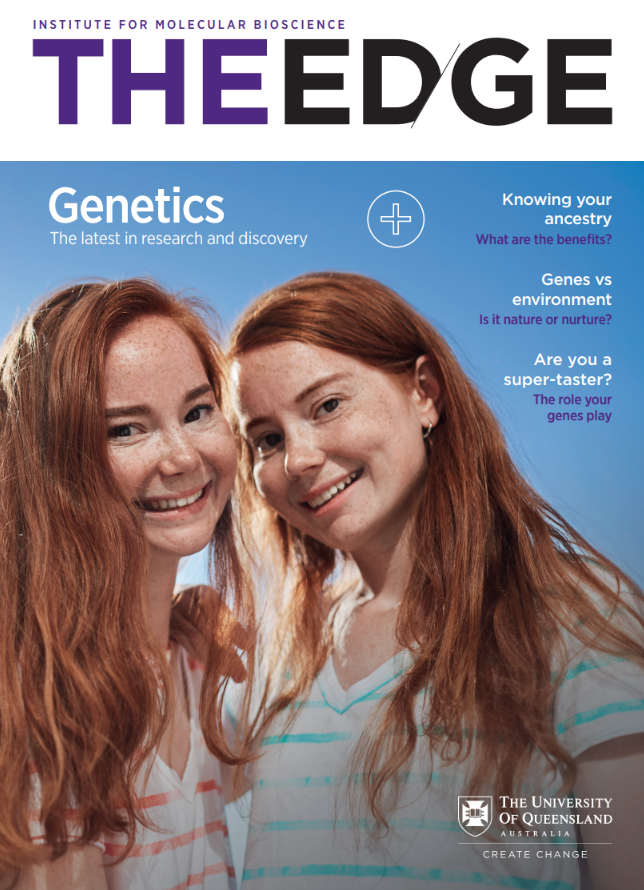
IMB's latest news, explainers and more
Risk of depression and heart disease linked in women
Get the latest research to your inbox
- Professorial Research FellowNHMRC Leadership FellowInstitute for Molecular Bioscience
Stow Group
Group Leader
Professor Jennifer Stow
Professorial Research FellowNHMRC Leadership FellowInstitute for Molecular BioscienceResearcher profile is public:1Supervisor:Researcher biography:Professor Jennifer Stow is a molecular cell biologist, an NHMRC Leadership Fellow and head of the Protein Trafficking and Inflammation research laboratory in The University of Queensland's Institute of Molecular Bioscience (IMB). Her previous leadership appointments include as Division Head and Deputy Director (Research) at IMB (12 years) and she currently serves on national and international advisory boards, editorial boards and steering committees, and as an elected Associate Member of the European Molecular Biology Organisation (EMBO).
Jenny Stow received her undergraduate and PhD qualifications at Melbourne's Monash University before undertaking postdoctoral training in the Department of Cell Biology at Yale University School of Medicine, USA. With training as a microscopist in kidney research, she gained further experience at Yale as a postdoc in the lab of eminent cell biologist and microscopist, Dr Marilyn Farquhar, where protein trafficking was both a theme and a passion. Jenny then took up her first faculty appointment as an Assistant Professor in the Renal Unit at Massachusetts General Hospital (MGH) and Harvard Medical School in Boston USA, where her research uncovered new roles for a class of enzymes, GTPases, in regulating trafficking within cells. At MGH her research also formed part of a highly successful NIH Renal Cell Biology Program. In late 1994, Jenny moved her research lab back to Australia, to The University of Queensland, in late 1994 as a Wellcome Trust International Medical Research Fellow. As part of IMB since, the Stow lab has continued a focus on protein trafficking, including pioneering live-cell imaging, to spearhead their work on trafficking in inflammation, cancer and chronic disease. Major discoveries include identifying new proteins and pathways for recycling adhesion proteins in epithelial cells, inflammatory cytokine secretion in macrophages and immune signalling through Toll-like receptors in inflammation and infection. Small GTPases of the Rab family, signalling adaptors and kinases feature among the molecules studied in the Stow lab for their functional roles and their potential as drug targets in inflammation and cancer. A keen focus is to understand the role of the fluid uptake pathway, macropinocytosis, in controlling inflammation, cancer and mucosal absorption.
Professor Stow has been awarded multiple career fellowships including from American Heart Association, Wellcome Trust and NHMRC. She has published >200 papers, cited over 15,500 times and she is the recipient of awards and honours, most recently including the 2019 President's Medal from the Australia and New Zealand Society for Cell and Developmental Biology. She is also academic head of IMB Microscopy, a world-class fluorescence microscopy and image analysis facility. Her research is funded by a variety of agencies and industry partnerships, in addition to NHMRC and ARC, including through the ARC Centre of Excellence in Quantum Biotechnology, QUBIC. The Stow lab work with national and international collaborators and welcome students and postdoctoral trainees to participate in their research. We value having a diverse, inclusive and supportive culture for research and celebrate the many diverse and wonderful successes of Stow lab alumni.
Body:Highlights
Professor Jennifer Stow is a molecular cell biologist. She has had a lifelong fascination with cells, the ‘ultimate factories’, and how they work. After being awarded a PhD from Monash University, and training at Yale University School of Medicine, her first faculty appointment was at Massachusetts General Hospital/Harvard Medical School.
Professor Stow is renowned for her research on protein trafficking which has revealed how proteins critical for inflammation and cancer are moved around inside cells or transported out of cells. The cell signalling pathways that regulate these processes are also investigated in her search for ways to combat disease. Advanced imaging of molecules in living cells provides Professor Stow’s group with a remarkable window into the sub cellular universe and a way to observe cell behaviour.
Connect



Researchers
Mr Darren Brown
Senior Research AssistantInstitute for Molecular BioscienceResearcher profile is public:0Supervisor:Mrs Tatiana Khromykh
NHMRC Research AssistantInstitute for Molecular BioscienceResearcher profile is public:0Supervisor:Dr Xichun Li
Postdoctoral Research FellowInstitute for Molecular BioscienceResearcher profile is public:1Supervisor:Students
Mr Hongyu Shen
Global Challenges ScholarInstitute for Molecular BioscienceResearcher profile is public:0Supervisor:Miss Sylvia Tan
PhD studentInstitute for Molecular BioscienceResearcher profile is public:1Supervisor:Miss Vrushali Maste
PhD studentInstitute for Molecular BioscienceResearcher profile is public:1Supervisor:Miss Wanyi Wang
Researcher profile is public:0Supervisor:- Adjunct Senior FellowInstitute for Molecular Bioscience
- Tasks to complete ahead of the scholarship application opening
- National Heart Foundation Future Leader FellowNational Heart Foundation Future Leader Fellow, Senior Principal Research Fellow –Group LeaderInstitute for Molecular Bioscience
- Research AssistantInstitute for Molecular Bioscience
Cater Lab Team
Group Leader
Dr Rosemary Cater
Senior Research Fellow & Group LeaderInstitute for Molecular BioscienceResearcher profile is public:1Supervisor:Researcher biography:Rosemary Cater was recently recruited to UQ's Institute for Molecular Bioscience as a Group Leader and ARC DECRA Fellow. She utilizes structural biology, membrane protein biochemistry, and biophysics to understand some of the brain's most elusive yet important proteins. The overarching goal of the Cater Lab is to understand molecular mechanisms of transport at the blood-brain barrier.
Dr. Cater was awarded her PhD in 2017 from the University of Sydney, and from 2017-2023 she was a Post-Doctoral Fellow in the laboratory of Prof. Filippo Mancia at Columbia University, New York, USA. Here she used single-particle cryo-electron microscopy and antigen-binding technology to determine structures of small membrane proteins.
Highlights of her career thus far include:
- She has been awarded an ARC DECRA, an NIH K99/R00 career transition award.
- She received a 2022 Blavatnik Regional Finalist Award in Chemistry – a highly competitive award for outstanding post-doctoral research presented at the New York Academy of Sciences Annual Gala.
- She was selected as one was 1 of 120 young leaders invited from 46 countries to the 2022 Science and Technology in Society Forum (Kyoto) to discuss humanity's global challenges with politicians, CEOs, and Nobel Laureates.
- She was appointed as one of twelve Simons Society Fellows (2018-2022) – one of the USA's most competitive post-doctoral fellowships, founded in New York by billionaire philanthropist Jim Simons.
- She received a Robin Anders Young Investigator Award at the Lorne Protein Structure and Function 2020 Meeting – one of Australia's most competitive awards for early-career protein scientists.
Researchers
Dr Farrah Blades
Postdoctoral Research FellowInstitute for Molecular BioscienceResearcher profile is public:1Supervisor:Researcher biography:My research interests are in cell structure, intra-cellular pathways and in protein structure. During my honors I characterised two mouse models of Multiple Sclerosis, looking at T-cell permeability through the blood-brain barrier and the CXCR4/ CXCL12 chemokine axis. During my PhD I found critical roles for the tyrosine kinase receptor, Tyro3, in myelination and retinal ganglion cell function while assessing the neuronal functional outcomes of Tyro3 driven myelin structural deficits. Following my PhD, I moved to the university of Queensland to begin a post doctoral research fellowship under the supervision of Prof. Ben Hankamer, where I focussed on cryogenic electron microscopy and single particle analysis of the photosystem II supercomplex. During this time I also helped establish a virtual desktop which runs from the Bunya supercomputer, making research software accessible and easier to use across UQ.
As of 2024 I have begun as a post doctoral research fellow under the supervision of Dr. Rosemary Cater, I will be assessing the structure and function of membrane transporter proteins such as FLVCR2 and MFSD2A in the context of the blood-brain and blood-retinal barrier. Our goal is twofold: first, to comprehend the fundamental biology of these transporters; second, to discover a mechanism that enables drug access across the blood-brain and blood-retinal barriers. This advancement will facilitate therapeutic treatments for an array of central nervous system diseases.
Body:Dr Farrah Blade's research interests are in cell structure, intra-cellular pathways and in protein structure. During her honours she characterised two mouse models of Multiple Sclerosis, looking at T-cell permeability through the blood-brain barrier and the CXCR4/ CXCL12 chemokine axis.
During her PhD, Farrah found critical roles for the tyrosine kinase receptor, Tyro3, in myelination and retinal ganglion cell function while assessing the neuronal functional outcomes of Tyro3 driven myelin structural deficits.
Following her PhD, Farrah moved to The University of Queensland (UQ) to begin a Post Doctoral Research Fellowship under the supervision of Professor Ben Hankamer, where she focused on cryogenic electron microscopy and single particle analysis of the photosystem II supercomplex. During this time she also helped establish a virtual desktop which runs from the Bunya supercomputer, making research software accessible and easier to use across UQ.As of 2024, Farrah has begun a post doctoral research position under the supervision of Dr Rosemary Cater, assessing the structure and function of membrane transporter proteins such as FLVCR2 and MFSD2A in the context of the blood-brain and blood-retinal barrier. The goal is twofold: first, to comprehend the fundamental biology of these transporters; second, to discover a mechanism that enables drug access across the blood-brain and blood-retinal barriers. This advancement will facilitate therapeutic treatments for an array of central nervous system diseases.
Pages
Strawberry DNA extraction activity
Extract and view DNA from a strawberry using common household ingredients.
Get started
The Edge: Genetics
People have known for thousands of years that parents pass traits to their children, but it is only relatively recently that our technology has caught up to our curiosity, enabling us to delve into the mystery of how this inheritance occurs, and the implications for predicting, preventing and treating disease.
Subscribe to our newsletter
Get the latest research straight to your inbox.
Stay up-to-date as we answer questions about hot topics, and share the latest news at IMB, Australia’s #1 research institute.
General enquiries
+61 7 3346 2222
imb@imb.uq.edu.au
Media enquiries
IMB fully supports UQ's Reconciliation Action Plan and is implementing actions within our institute.
Support us
Donate to research
100% of donations go to the cause


